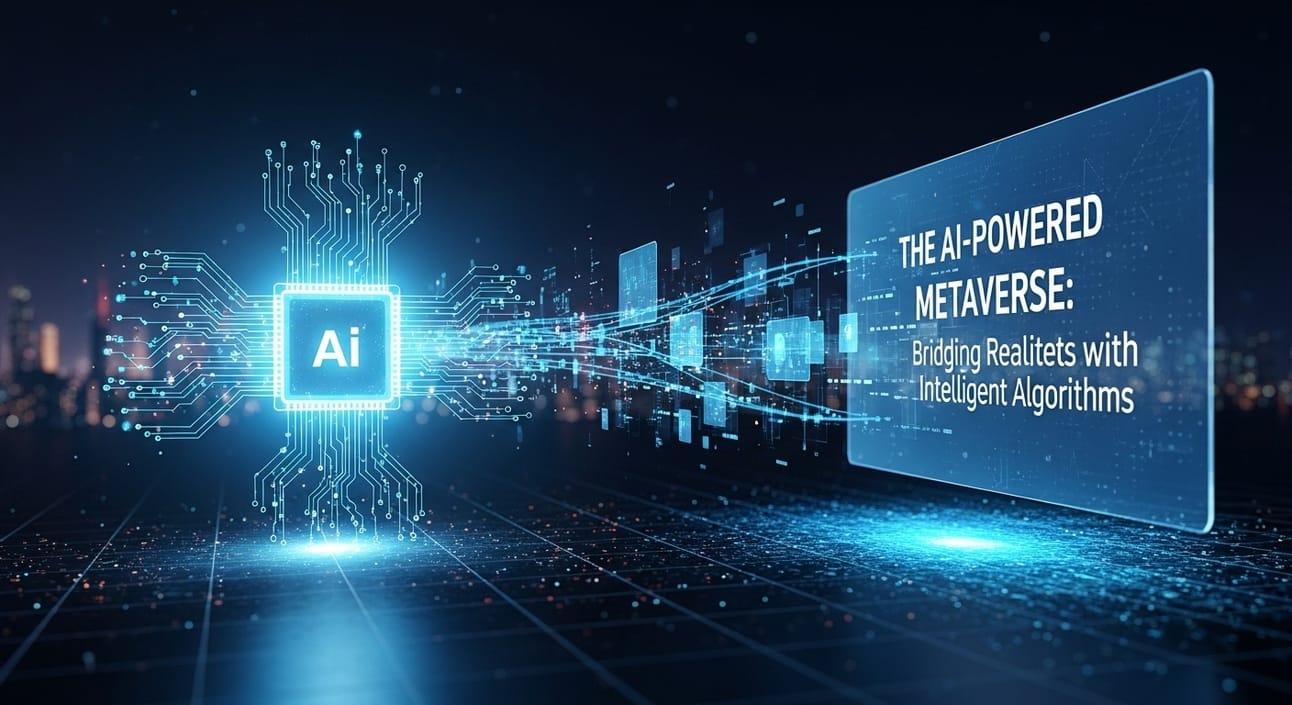- Digital Brain
- Posts
- The AI-Powered Metaverse: Bridging Realities with Intelligent Algorithms
The AI-Powered Metaverse: Bridging Realities with Intelligent Algorithms

Hello, Digital Brain reader!
We've explored AI's profound impact across various domains, from its ethical implications to its role in cybersecurity and even its environmental footprint. Today, let's dive into a frontier that promises to redefine our digital interactions and blur the lines between the physical and virtual: the Metaverse and Web3. While often discussed as separate concepts, Artificial Intelligence is the crucial engine powering these immersive, decentralized digital worlds, making them dynamic, intelligent, and truly interactive. How is your "Digital Brain" preparing to navigate these new realities?
Understanding the Metaverse and Web3 (Briefly)
The Metaverse: Imagine a persistent, interconnected network of 3D virtual worlds where users can interact with each other, digital objects, and AI-powered agents in real-time. It's not just a game; it's envisioned as a new layer of the internet for work, social interaction, entertainment, and commerce.
Web3: This refers to the next generation of the internet, characterized by decentralization, blockchain technology, and user ownership of data and digital assets (like NFTs). It aims to shift power from large corporations back to individual users.
While Web3 provides the decentralized infrastructure and ownership layer, AI provides the intelligence, dynamism, and immersive experiences that make the Metaverse come alive.
How AI is the Unseen Architect of the Metaverse
AI is not just a feature; it's fundamental to building and populating the Metaverse:
Content Generation (Procedural and Generative AI):
World Building: AI can procedurally generate vast, detailed virtual environments, landscapes, buildings, and objects, dramatically reducing the manual effort required to create expansive metaverses.
Avatar Creation: Generative AI allows users to create highly customized, realistic, or fantastical avatars from simple text prompts or even photos, giving users unique digital identities.
Dynamic Assets: AI can create dynamic textures, sounds, and visual effects that adapt in real-time based on user interaction or environmental changes.
Intelligent NPCs and Virtual Agents:
Populating Worlds: AI powers Non-Player Characters (NPCs) that inhabit virtual worlds, making them feel alive. These NPCs can have realistic behaviors, engage in conversations, and even perform tasks.
Personalized Interactions: AI-driven virtual assistants and guides can offer personalized experiences, help users navigate complex environments, or provide customer support within the Metaverse.
Emotional AI: Future AI could interpret user emotions and respond accordingly, making interactions more nuanced and engaging.
Personalization and Adaptive Experiences:
Tailored Content: AI analyzes user preferences, behaviors, and interactions to personalize content, advertisements, and experiences within the Metaverse, making it more relevant to each individual.
Adaptive Environments: Virtual spaces can dynamically change based on user presence, mood, or activity, creating truly responsive environments.
Moderation and Safety:
Content Filtering: AI can detect and filter inappropriate content, hate speech, or harmful behaviors in real-time, ensuring a safer environment for users.
Fraud Detection: In Web3, AI can help identify fraudulent activities related to NFTs, cryptocurrencies, and other digital assets, enhancing security.
Optimization and Performance:
Resource Management: AI can optimize the allocation of computational resources, ensuring smooth performance even with millions of concurrent users and complex virtual environments.
Network Optimization: AI can manage network traffic and latency, crucial for real-time, immersive experiences.
The Convergence with Web3: A Decentralized, Intelligent Future
The integration of AI with Web3 principles means:
User-Owned AI Assets: Imagine owning an AI companion or an AI-generated piece of art as an NFT, which you can trade or use across different virtual worlds.
Decentralized AI Models: Future AI models could be trained and run on decentralized networks, reducing reliance on centralized tech giants and potentially increasing transparency.
Smart Contracts and AI: AI could automate the execution of complex smart contracts based on real-world data or events, enhancing the functionality of decentralized applications.
Challenges and the Road Ahead
Despite the immense potential, significant challenges remain:
Computational Demands: Creating and maintaining truly immersive, AI-powered metaverses requires unprecedented computational power.
Interoperability: Ensuring seamless transitions and asset portability between different virtual worlds is a major hurdle.
Ethical AI in Virtual Spaces: Addressing issues like deepfakes, digital identity theft, and the psychological impact of highly immersive, AI-driven virtual realities.
Data Privacy in Decentralized AI: Balancing user ownership with the need for data to train and improve AI models.
The AI-powered Metaverse and Web3 represent a bold vision for the future of the internet, promising new forms of interaction, commerce, and creativity. As these technologies mature, your "Digital Brain" will be at the forefront, navigating and shaping these intelligent new realities.
Dive in, explore, and see you in the next edition!
Sincerely,
The Digital Brain Team